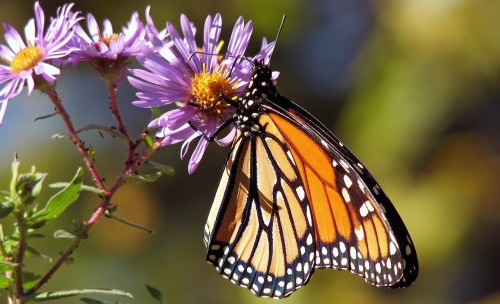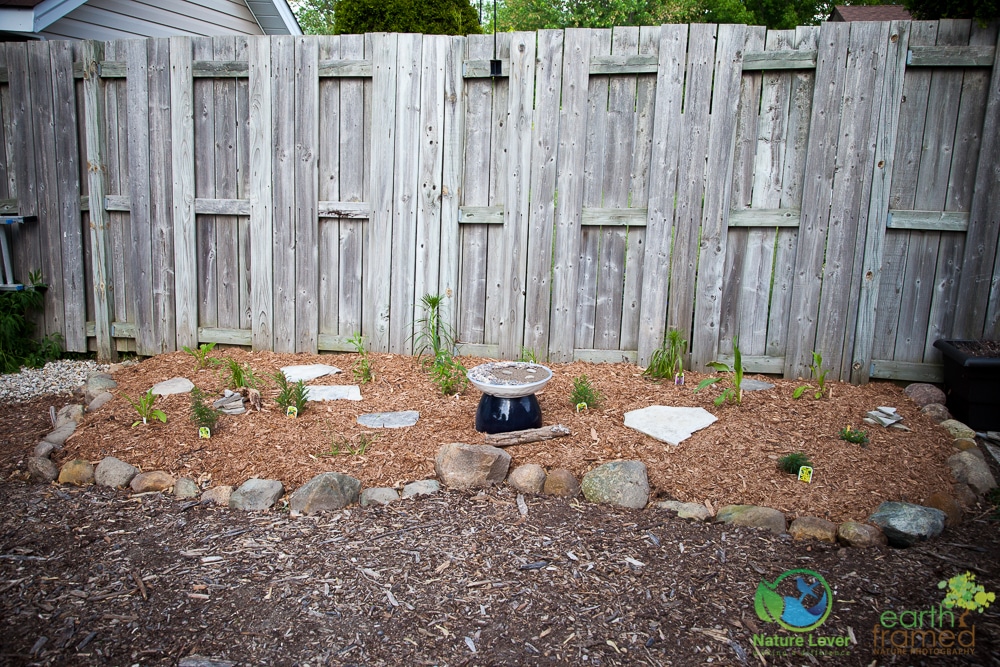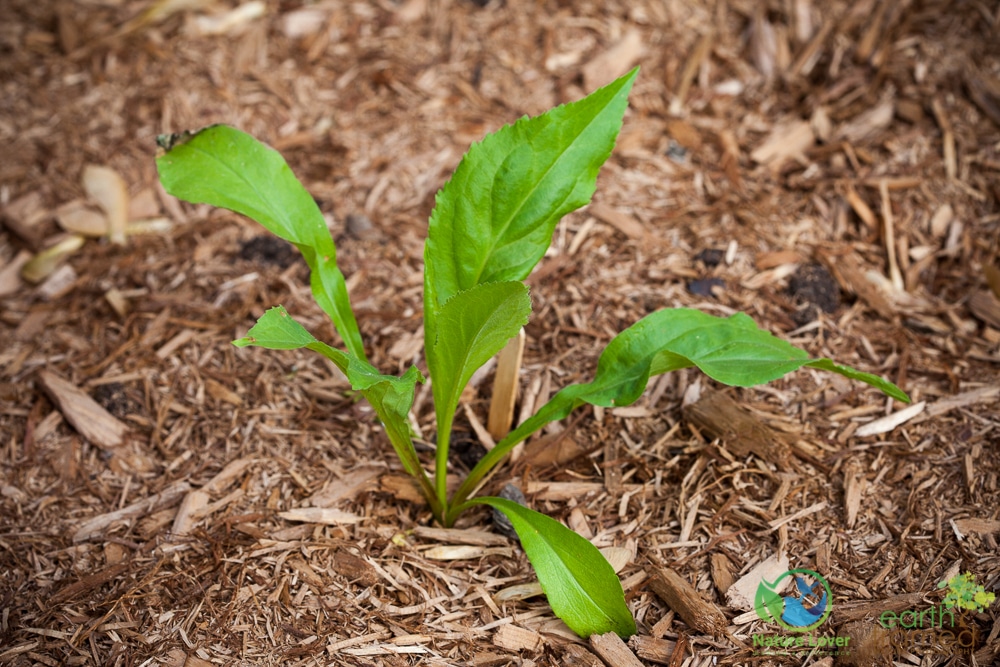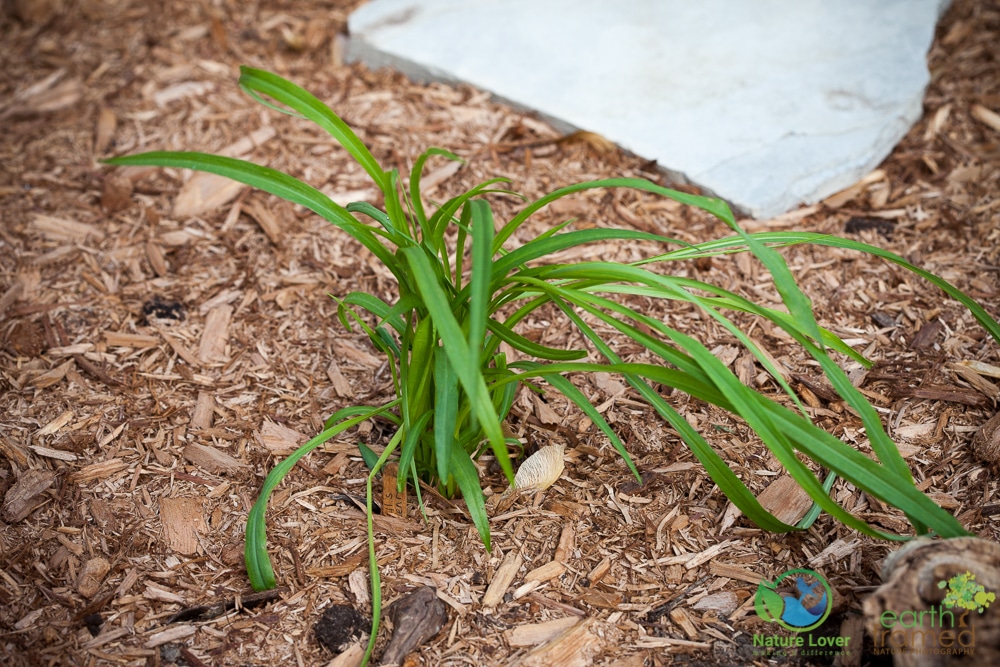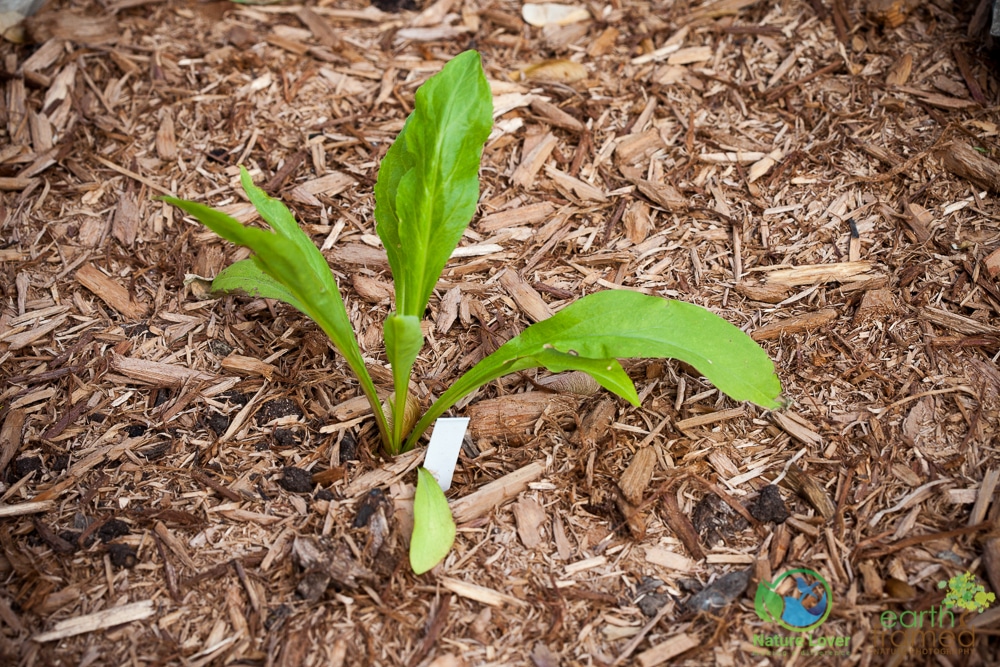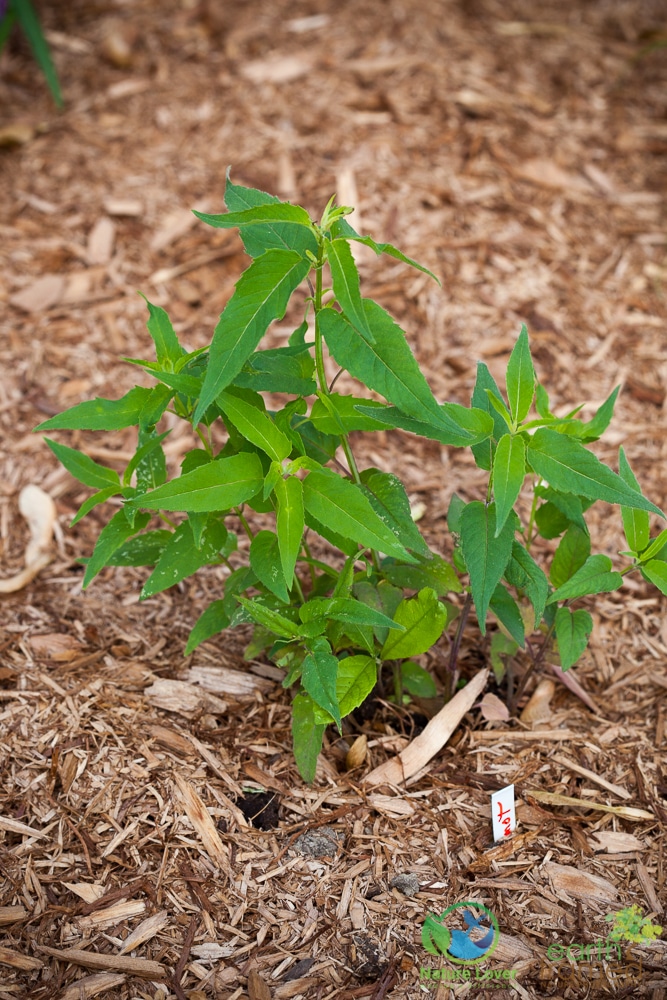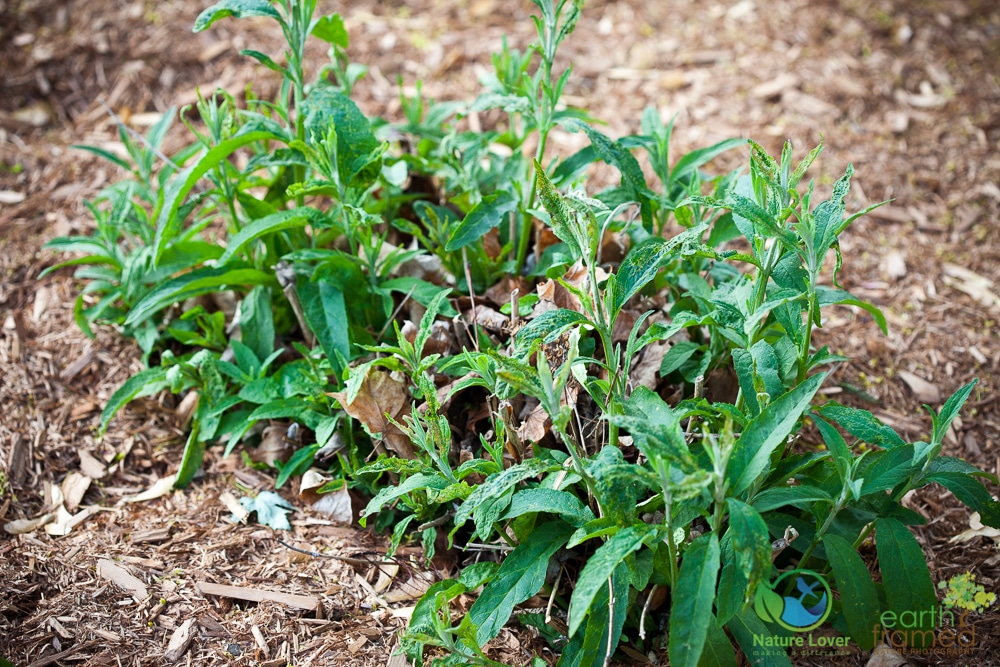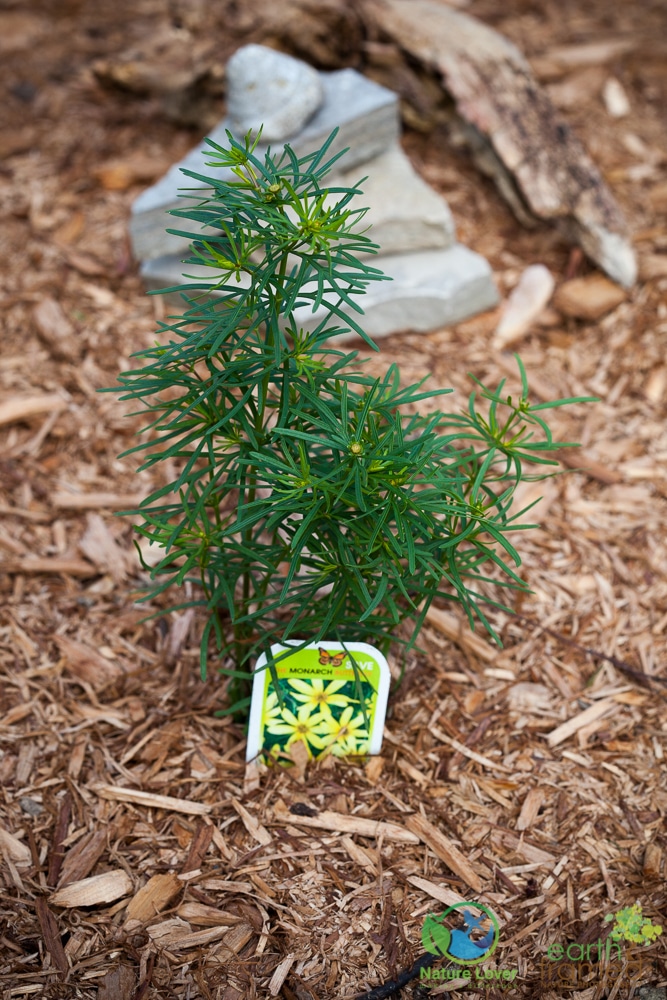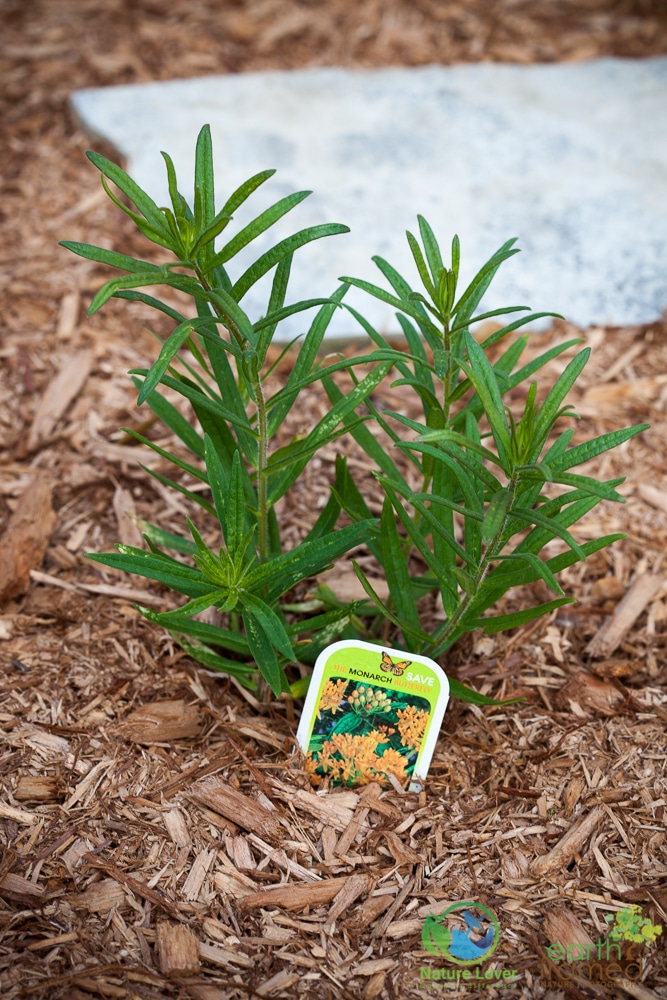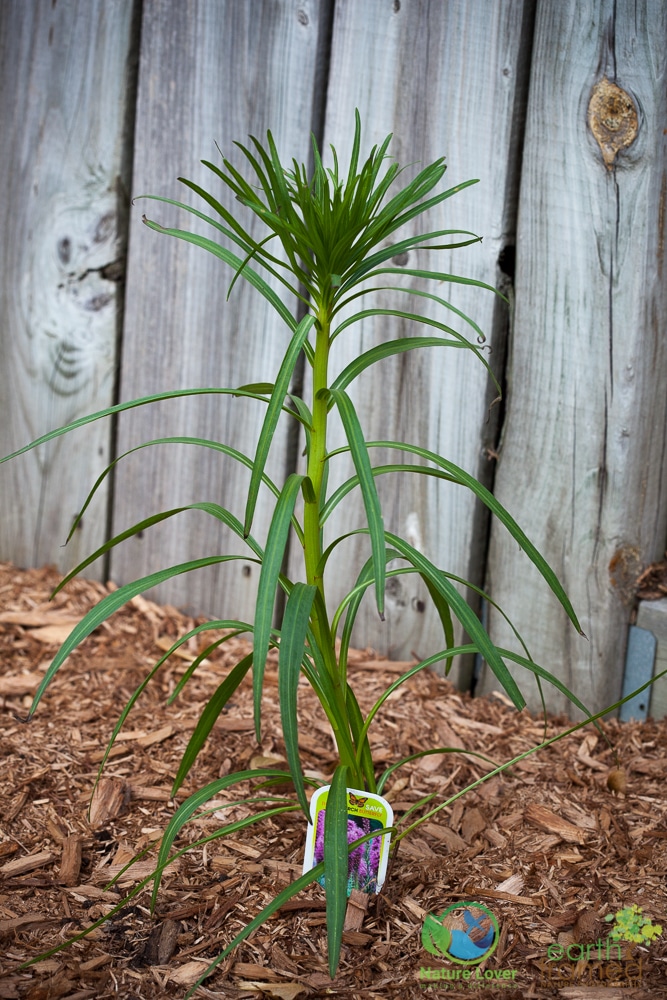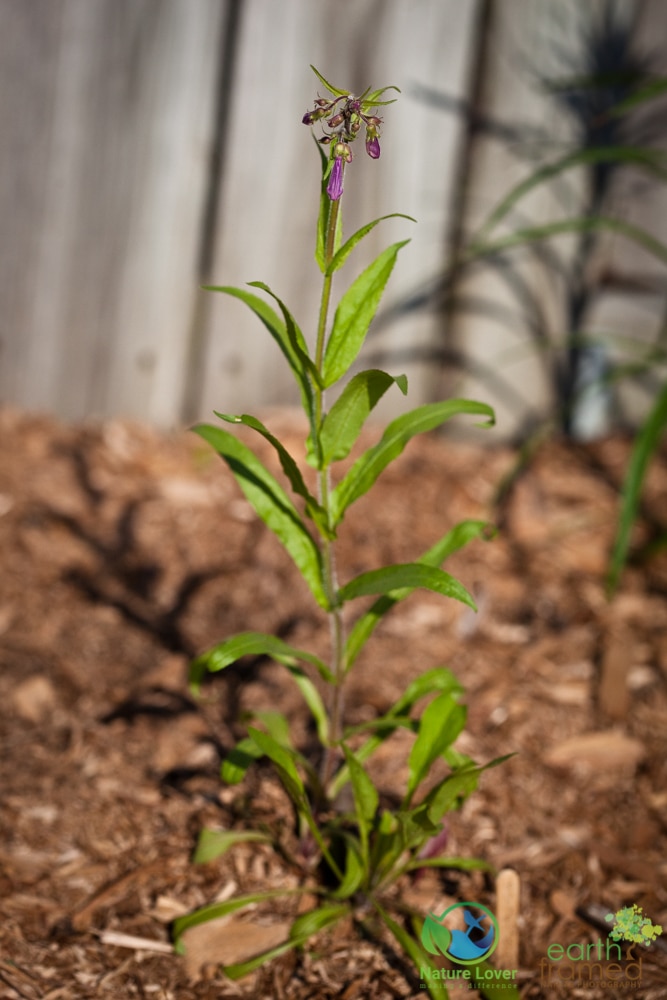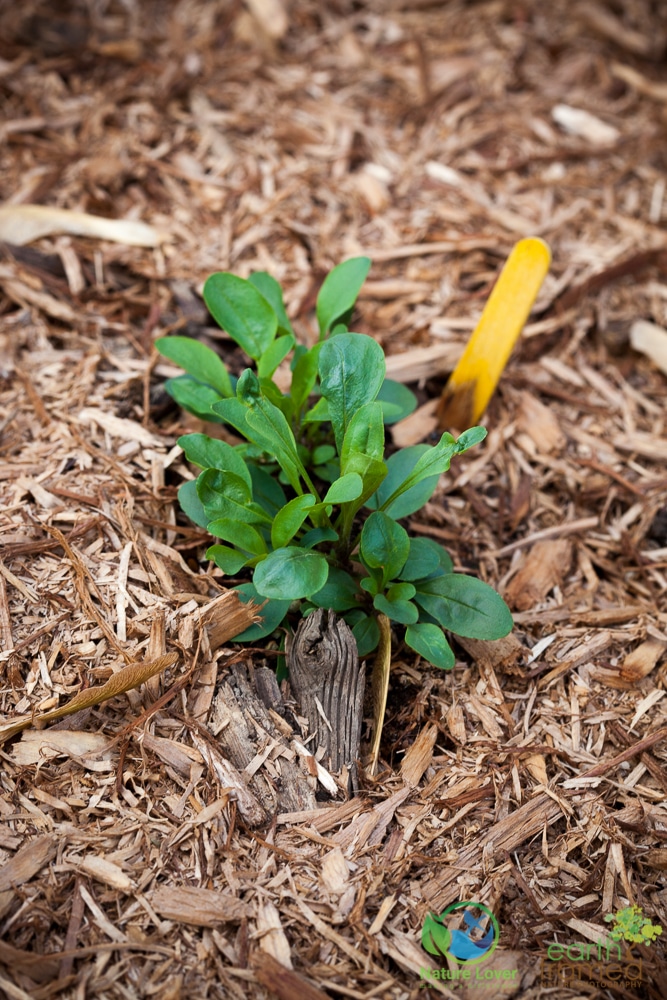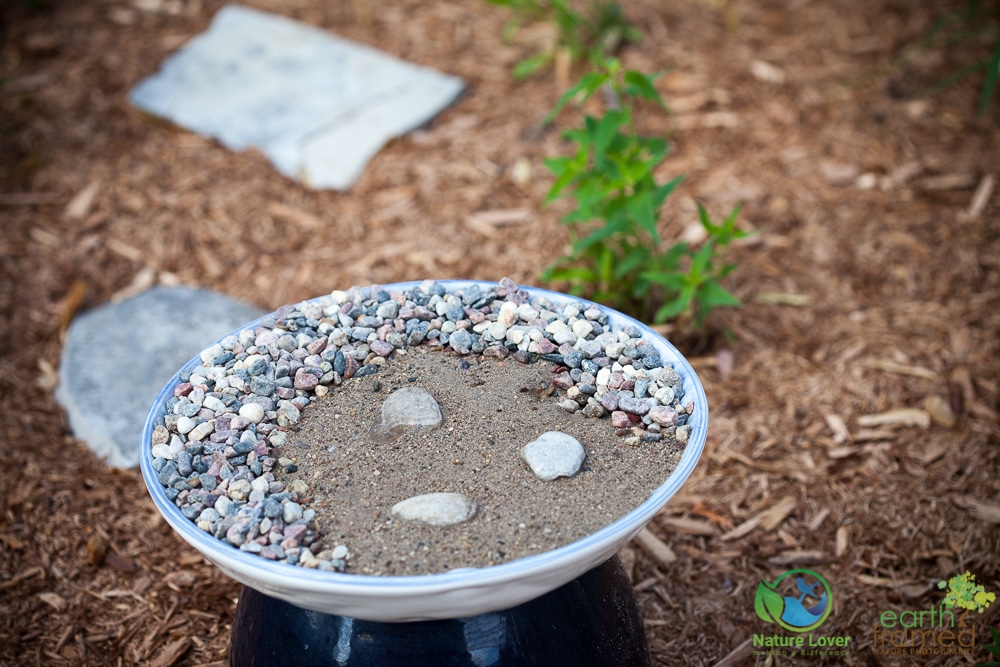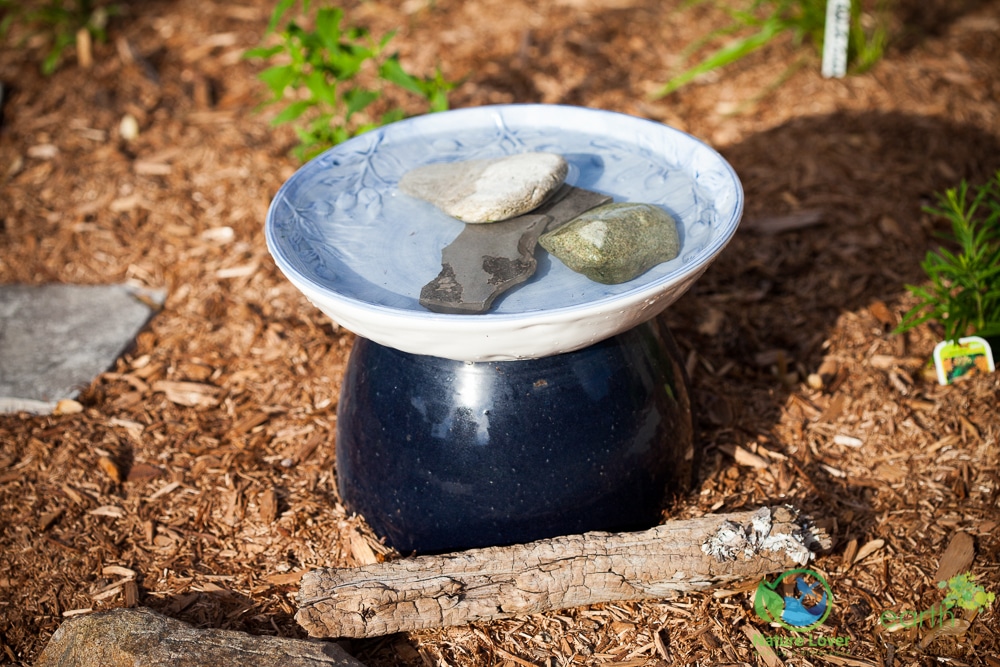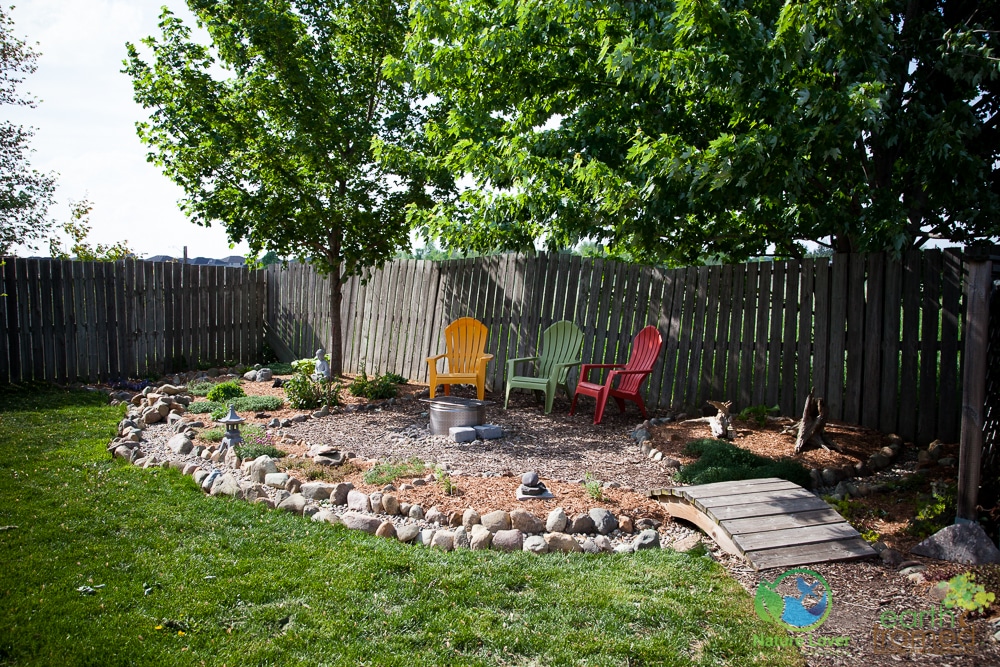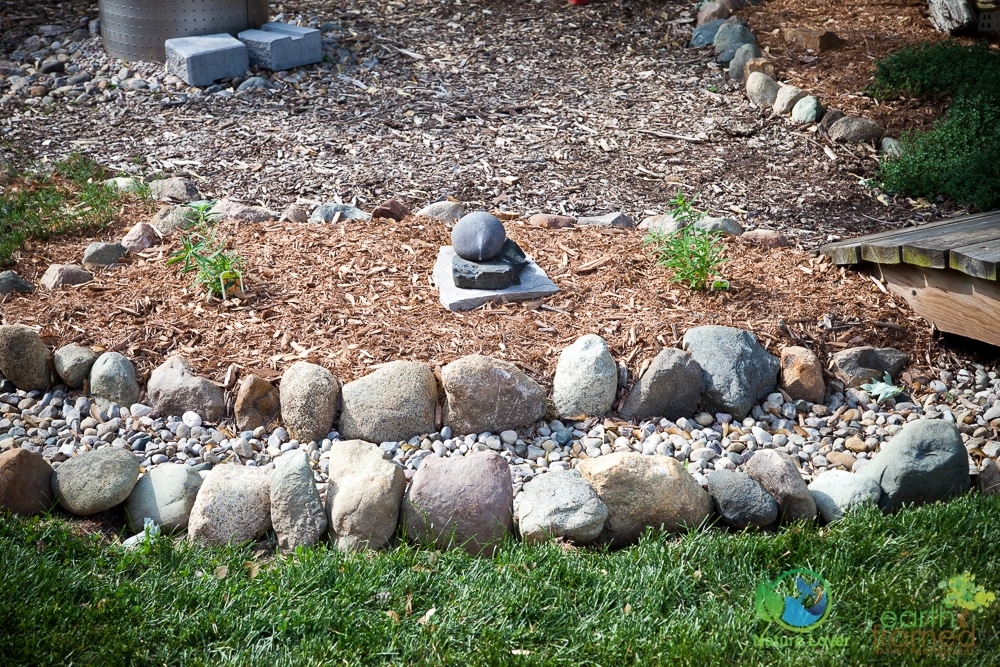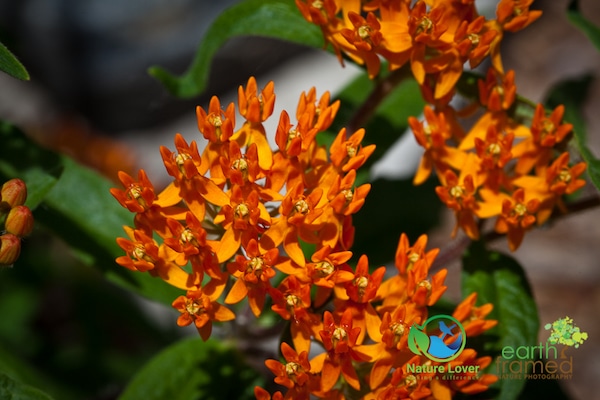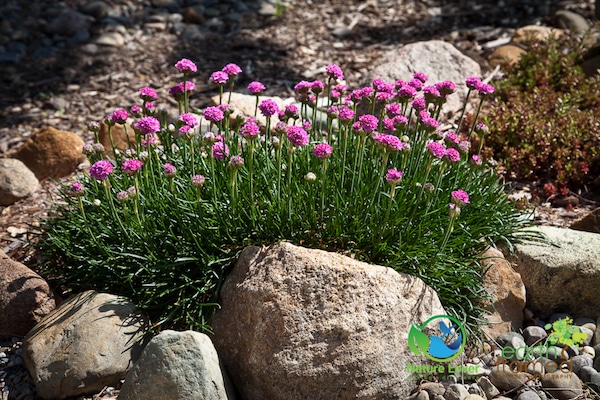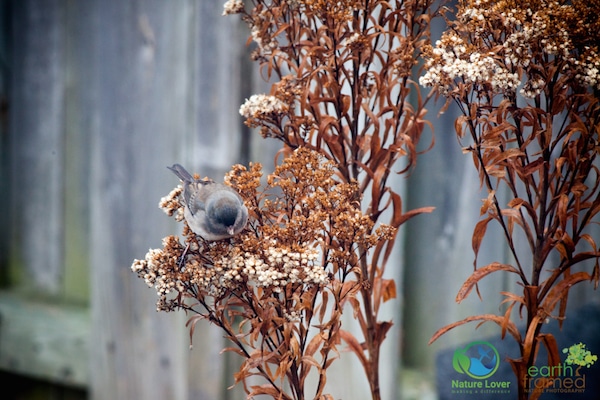This year we have added a new garden in our backyard specifically for pollinators: bees, butterflies and other beneficial insects. This is the beginning of our
‘PROTECTING POLLINATORS’ project. All of the flowers are native species and most were purchased from Return The Landscape (either directly or from DeGroots). We also purchased two Monarch Mix Kits, which were put out by the Canadian Wildlife Federation, and can be purchased from Home Depot. Both organizations grow quality plants that have not been genetically modified and have not been treated with pesticides.
We will have two large flowerbeds and three smaller beds, for a total of ___ square feet of pollinator heaven.
The above flower garden starts getting sun mid to late morning and then gets direct sunlight all day into the early evening. There are 8 different native plant species planted in this bed.
The first three species are all goldenrods. Goldenrods often get mistaken for ragweed. Unlike ragweed, which is pollinated by the wind and therefore causes some people allergies, goldenrod is pollinated by insects, including butterflies, and is not airborne. The three species that we planted were recommended to us by Return The Landscape because they are ‘garden friendly’. All goldenrods have yellow flowers and they attract bees, beetles, butterflies and flies.
Early Goldenrod, also known as Sharp Toothed Goldenrod, is the first to bloom. Pollinators will be attracted to its flowers from June to August.
Riddell’s Goldenrod is listed as a species of “Special Concern”, which means it could become threatened or endangered. This species will bloom from August to September
This goldenrod is known by many names: Stiff, Stiff-Leaved, Rigid and even Hard-leaved Goldenrod. It isn’t very common in Ontario, so it’s nice to have it in the garden. It will bloom in the middle of the summer, from August to October.
Wild Bergamot is similar to Bee Balm, which we have a patch of in the front yard, except Wild Bergamot is purple in colour while Bee Balm is red. Both plants flower from June to August and will attract birds, hummingbirds, butterflies, bees and other showy insects.
Tickseed Coreopsis is one of the 3 plant species we selected from the “Monarch Mix Kit” which is part of the Canadian Wildlife Federation’s ‘Help The Monarch’ conservation effort. This plant was actually introduced to Canada from the United States. The Tickseed will bloom from June to July and attracts birds and butterflies.
The Butterflyweed, also known as Orange Milkweed, is a great addition to our pollinator patch. Although the leaves are considered to be somewhat fibrous for larval food, the plant has a longer blooming time which will supply Monarchs, and other pollinators, nectar well into September. This milkweed is the second species that came with our “Monarch Mix Kit”.
The Dense Blazing Star plant is the third plant species from the Canadian Wildlife Federation and is listed as ‘threatened’ in Ontario. This tall, showy flower will bloom from July to November and will attract hummingbirds, butterflies and bees. This plant is used as a larval host for the Glorious Flower Moth.
Hairy Beardtongue blooms from May to July, making it one of our earliest bloomers in the pollinator gardens. We have other gardens with plants that bloom as early but aren’t specifically native and are species we planted before we knew what we know now. The Hairy Beardtongue will attract hummingbirds and bees.
We purchased this plant from the native plant sale early in May. We thought we had picked up two Hairy Beardtongue plants, and it was even labeled as such. After getting it home we realized it wasn’t a smaller version of the other one since the leaf shape is so different. We will wait until it blooms in order to properly identify it.
In addition to the native plants, we continued with our previous theme by edging the flower bed with rocks that were given to us by a farmer from his field. These rocks will heat up in the morning, once the sun hits them, and provide a place for butterflies to warm in the morning.
In the middle of the bed you will see a upside down planter with a large dish on top. Initially I had planned on making it a puddling station. I put sand and rocks in the dish and then saturated it with water. The plan was to give butterflies a space to safely drink and get nutrients from the sand.
I realized that this station was drying up too quickly to be of any use, unless I was willing to add water several times a day during hotter days. I emptied the rocks and sand and made it into a drinking station instead. I placed a variety of rocks with gentle slopes into the water so that no matter how deep or how shallow the water was, butterflies should still be able to get a drink. I freshen the water each day to keep mosquitoes from breeding in it.
Off to the side, beside the dry river bed and the bridge, we took a few non-native plants out and added two more Butterflyweed. This flowerbed gets full sun.
Our next installation will be posted soon since we decided to convert some more of the backyard lawn into an additional native species, pollinator garden.


